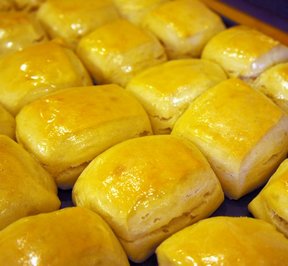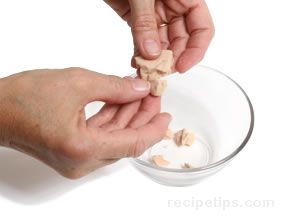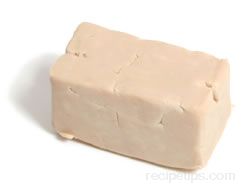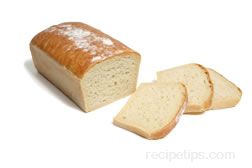As a general rule, store unopened yeast in a cool, dry area away from excessive heat or humidity. Opened yeast should be kept refrigerated, stored in an airtight container for approximately 4 months before it begins to loose it ability to be considered an "active" dry yeast. Yeast is packaged in containers or small envelopes. Each small envelope typically contains 1/4 ounce or 2 1/4 tablespoons.
There are two primary types of food yeasts commonly available, known either as non-leavening yeasts (Brewer's yeast) or a leavening yeasts (Baker's yeast). Brewer's yeast is the type used to produce alcoholic beverages, such as beer. This yeast is added after the liquid "wort" is produced, which ultimately begins the fermentation process for the beer product. Brewer's yeast is also produced as a byproduct of brewing and is converted into a food supplement that provides proteins and vitamins to our diets. The yeast made into a food supplement can typically be purchased in the health food sections of grocery stores.
Baker's yeast is the second type, which is a leavening yeast. It is available as Active dry yeast, compressed fresh yeast or a yeast starter. Active dry yeast, which is an oven dried granule of yeast, is the type that is most often used for baking. Since the yeast consists of dehydrated particles, the cells are inactive and do not become active until the yeast is combined with warm water heated to a temperature from 105° to 115°F. The active dry yeast can be found as either an instant dry yeast or quick-rise dry yeast, also known as fast-rise yeast.
Instant dry yeast has been dried to reduce the moisture content, making it more shelf stable. It is a yeast that is mixed with an emulsifier and a sugar product, which increases the number of yeast cells, enabling the mixture to become active very quickly when added to warm water. This type of yeast can be used to make dough that can be placed in an oven without allowing time for rising, since the dough is constantly rising from the increased number of yeast cells in the mixture. However, it is not a good yeast to use for any dough requiring added sugar, such as doughs for sweet goods, since the yeast will react adversely to additional sugar.
Quick-rise yeast is a strain of yeast created by chemists to contain many of the valued properties of other types of yeast. It is a yeast that is low in moisture content and high in carbon dioxide content enabling the dough to rise faster. It is a type that is resistant to minor temperature changes and is a yeast that becomes alive and active quite quickly as it is added to dry ingredients combined with liquid that is heated to 120° F. Dry yeast should be stored in the refrigerator in an air tight container for no longer than one year.
Compressed fresh yeast, also known as cake yeast, is a high moisture type of yeast that spoils easily if not kept refigerated properly, but is often considered one of the most dependible for consistent results in raising the dough. When sold in grocery stores, it is packaged as small, square compressed blocks or cakes that are equal in portion sizes to one envelope of dry yeast. For commercial bakers, the blocks are larger in size and weight. To dissolve compressed yeast in water, heat the water to approximately 95°F. This yeast can be kept in an airtight container for 14 to 20 days or it can be frozen to be kept for several months. Compressed fresh yeast is light tan in color and smooth in texture when it is fresh. As it ages, the color changes to a darker brown and the texture becomes rough and crumbly.
Yeast starter, when used for baking, is an older type of leaving agent that was commonly used prior to the introduction of baking powders and the various yeasts now readily available. It is made by creating a batter of flour, water, sugar and yeast. The yeast can be either packaged yeast obtained from food stores or yeast provided by exposing the mixture to the air, as was the typical method used in earlier years. The mixture is then placed in a warm area for a period of time allowing the fermentation process to begin resulting in a foam starting to form over the batter. Starter yeasts are most often used to make sourdough or sweet breads. Starter yeast is also used in the beginning stages of beer brewing to start the fermentation process and to add a character as well as flavor to the beverage being brewed. Typically, a beer yeast starter will consist of water, dry malt extract and yeast.
Due to the short life of many types of yeast, it is always best to proof the yeast to make sure it is still alive. Proofing yeast involves placing the yeast in warm tap water (105ºF to 115ºF) and adding a dash of sugar or honey to stimulate the foaming. The combined mixture is allowed to sit for 10 minutes or slightly less, while checking to see if the contents bubble up, foam or increase in size. If there is no reaction, and the water was not too hot or too cool to stimulate the reaction, then the yeast is not alive and should be discarded. Otherwise, if the action described occurs, the yeast is an active yeast that can be used for preparing doughs.
Using yeast in altitudes above 3,000 to 3,500 feet requires an understanding of several aspects of dough preparation and baking that should be considered. Bread dough will rise faster and higher at high altitudes due to a decrease in the available air and thus, less air pressure pushing back on the dough. In order to improve the results, decrease the amount of yeast by a third (1/3) or a half (1/2) in order to allow the dough to rise more slowly prior and during baking. It is best to use an instant active yeast instead of any type that is fast rising to assist with the bread making process.














